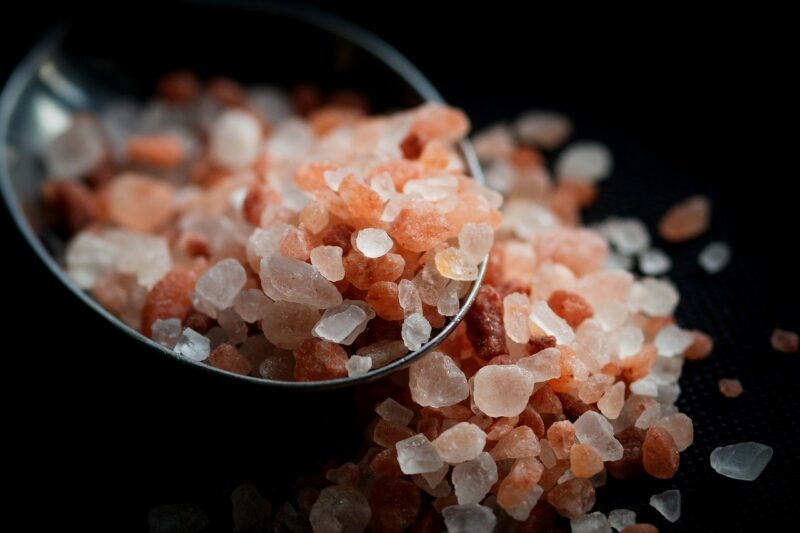How to Perfectly Season Your Food Every Time: A Guide to Salt and Spices
November 11, 2024

Cooking is an art that brings together various elements to create tasty meals. One fundamental aspect that distinguishes a good meal from a great one lies in the perfect use of seasoning. Proper seasoning enhances the natural flavors of ingredients, balancing and elevating them to create a symphony of taste on your palate. In this article, we’ll delve into the essential components of seasoning — salt and spices — and offer practical tips to ensure your food is perfectly seasoned every time.
1. Understanding the Basics of Seasoning
Before diving into the specifics of salt and spices, it’s crucial to understand what seasoning does. Seasoning refers to enhancing the flavor of food by balancing sweetness, sourness, bitterness, and saltiness. It can involve different techniques, including the strategic use of salt, herbs, spices, and acid to achieve a delicious end result.
Using seasoning correctly enhances the taste, aroma, and even the texture of your dishes. Experimenting with different seasonings can also transform a simple dish into a culinary masterpiece.
2. The Role of Salt in Cooking
One of the most critical elements of flavor is salt. It’s not just a flavor enhancer, but it also suppresses bitterness and enhances sweetness in food. There are various types of salt to consider when cooking:
- Table Salt: Most common; very fine in texture and often iodized. Because it’s fine, its saltiness can be overpowering if not used carefully.
- Kosher Salt: Coarser than table salt, it’s great for seasoning meat before cooking, as it draws out moisture and creates a delicious crust.
- Sea Salt: Harvested from evaporated seawater, it comes in various textures and flavors, often adding a unique finish to dishes.
- Himalayan Pink Salt: Often praised for its mineral content and unique flavor, it’s especially appealing for finishing touches on meat dishes.
When seasoning with salt, always remember: it’s challenging to add less salt once you’ve added too much. It’s wise to start small and adjust according to taste.
3. How to Properly Season Your Food with Salt
– Taste as You Go: A significant key to seasoning food is tasting it throughout the cooking process. This way, you can adjust salt levels as needed.
– Know When to Add Salt: The timing of adding salt can dramatically alter your dish’s flavor. Here are some guidelines:
- For meats, salting before cooking will help to tenderize and develop a nice crust.
- For vegetables, salting during cooking can help release moisture and enhance their natural flavors.
- For soups and stews, salt can be added at various stages, but tasting towards the end is critical to prevent oversalting.
– Experiment with Salt Blends: Combining different salts can add dimension to your dishes. Experiment with flavored sea salts or herb-infused salts to boost flavor without using excessive amounts.
4. The World of Spices: A Flavorful Exploration
Spices are aromatic or pungent plant-derived substances that elevate the taste of your food. They come in various forms, including seeds, bark, roots, and fruits. Here’s a brief overview of essential spices and their typical uses:
- Black Pepper: The most common spice, it adds heat and depth to nearly any dish.
- Cumin: With a warm, earthy flavor, cumin is a staple in many global cuisines, from Indian curry to Mexican chili.
- Paprika: Available in sweet, smoked, and hot varieties, paprika adds color and flavor to dishes like goulash or deviled eggs.
- Turmeric: Known for its vibrant yellow color and health benefits, turmeric is often used in curries and provides a subtle, warm flavor.
- Oregano: Essential in Mediterranean cooking, it’s great in tomato sauces and roasted vegetables.
- Basil: A fresh, aromatic herb often paired with tomatoes, it shines in dishes like pesto and Caprese salad.
Remember that spices often become more potent when heated; a little goes a long way.
5. Techniques for Using Spices Effectively
– Toast Whole Spices: Toasting spices like cumin or coriander in a dry skillet can release their essential oils and intensify their flavors. Be careful not to burn them, as that can lead to bitterness.
– Grind Fresh Spices: Freshly ground spices can provide much more flavor than their pre-ground counterparts. Invest in a spice grinder to elevate your cooking.
– Layer Your Flavors: When using multiple spices in a dish, add them at different stages to build flavor complexity. For example, add some spices early in cooking for depth and sprinkle a bit of fresh herbs at the end for brightness.
– Try Spice Blends: Spice blends like garam masala or curry powder can save time and provide well-balanced flavors in your dishes. Consider making your own blends to suit your taste!
6. Frequently Asked Questions about Seasoning
– How do I know if my food is properly seasoned? Taste your food throughout the cooking process. It should be flavorful but not overly salty. A well-seasoned dish will highlight the natural tastes of the main ingredients without overwhelming them.
– What’s the best way to season dishes in advance? If preparing a meal ahead of time, consider marinating proteins or vegetables with spices and salt a few hours to a day before cooking. This infuses deeper flavors.
– Can I over-season my food? Yes! Adding too much salt or spice can overwhelm the dish’s natural flavors. Start with less and gradually increase until you achieve the desired taste.
7. Conclusion: Mastering the Art of Seasoning
Seasoning is an integral part of cooking that can take your culinary abilities from basic to extraordinary. Mastering the use of salt and spices will allow you to create dishes that please your palate and impress those you serve. Experiment with different types of salt, familiarize yourself with spices, and practice layering flavors to discover your unique seasoning style.
By following these guidelines and tasting as you go, you’ll consistently achieve perfectly seasoned food that will delight at every meal.







